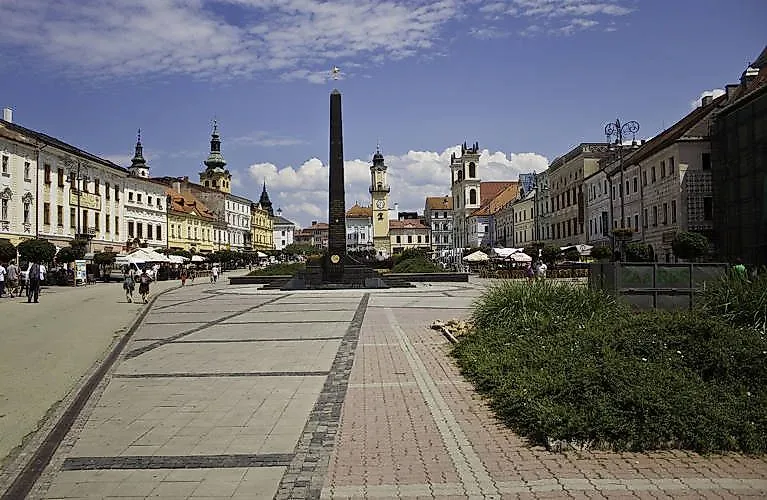The webcam in Banská Bystrica is located in a particularly scenic spot - with a view of the castle ruins in the historic center and the roofs of the city. Nestled between the Great Fatra, Kremnica Mountains and the Low Tatras, it impressively shows the geographical location of this traditional Slovakian town. Depending on the season, you can see snow-covered hills, colorful autumn landscapes or lively squares. Ideal for anyone who wants to check the weather, plan an excursion or simply enjoy the flair of the city digitally.
Where is Banská Bystrica located?

Banská Bystrica is located in the center of Slovakia, about 200 km northeast of Bratislava and west of Košice. With over 81,000 inhabitants, it is the fifth largest city in the country and the administrative seat of the district of the same name and the Banskobystrický kraj(Banská Bystrica region). The city covers 103 km² and lies at an altitude of 362 m in the valley of the Hron River, surrounded by several mountains: the Great Fatra, the Low Tatras, the Slovak Ore Mountains and the Poľana. This location makes Banská Bystrica an ideal starting point for nature and cultural experiences in central Slovakia.
What's going on in Banská Bystrica?
Numerous events take place in Banská Bystrica throughout the year - including the traditional Radvaň fair, concerts, sporting events and exhibitions. Those interested in culture can visit the Monument and Museum of the Slovak National Uprising, the Štátna galéria for contemporary art or the Postal Museum. The city is also home to several universities, which makes for a lively student atmosphere. Especially in summer, the central square fills with life - with street artists, markets and open-air events. In winter, ski resorts and Advent events provide variety.
What is there to do in Banská Bystrica?
The city offers a wide range of leisure activities. Those interested in history can explore the old town with its clock tower, town castle and Renaissance houses. Nature lovers can discover the Harmanec stalactite cave or hike to viewpoints such as the Vartovka observatory. In summer, the Aqualand leisure pool attracts visitors with its lake, water slides and sports facilities. In winter, winter sports fans will find perfect conditions in Donovaly or Skalka - ideal for skiing, snowboarding or cross-country skiing. Those who prefer a quieter pace can relax in the thermal baths of Brusno, Sliač or Kováčová. Banská Bystrica is an attractive destination at any time of year.
What is the weather like in Banská Bystrica?
The climate in Banská Bystrica is temperate with four distinct seasons. Summers are pleasantly warm with temperatures around 25 degrees, ideal for hiking and swimming trips. In winter, snowfall ensures the best skiing conditions in the surrounding mountains. Spring and autumn are mild with colorful nature and good visibility. Our webcam gives you an authentic picture of the current weather situation at all times. Weather forecasts for today, tomorrow and the next few days are also available - perfect for planning excursions and outdoor activities.






